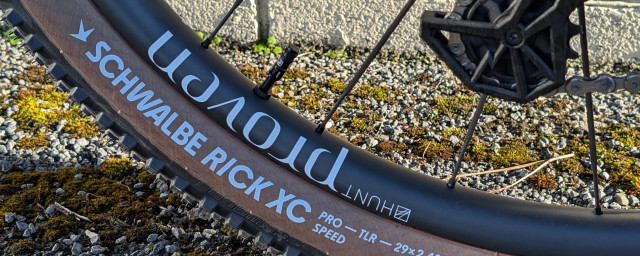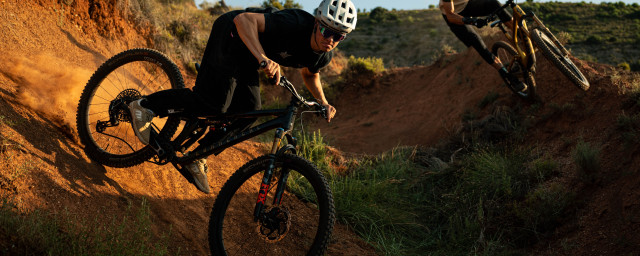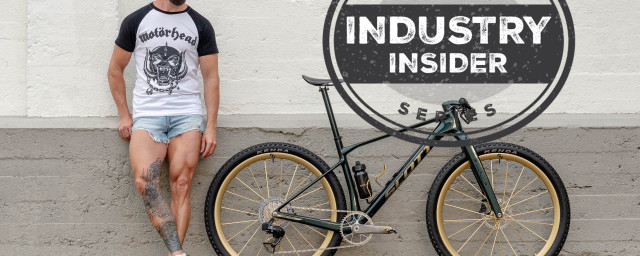
- Powerful
- Light, stiff levers
- Integrate very well with M8100 drivetrain
- Wandering bite point creats inconsistent braking
- Need a lot of bleeding and maintenance
The Shimano Deore XT M8100 two piston brakes have been on test for over nine months, alongside the matching 12-speed drivetrain. Whilst at times they have been powerful brakes, they lack the finesse and supreme reliability we’ve come to expect from Shimano.
- The best four piston hydraulic brakes you can buy for enduro and trail mountain bikes
- Your complete guide to Shimano mountain bike disc brakes - Deore, SLX, XT, XTR, Saint, Zee models and more
- Your complete guide to SRAM mountain bike disc brakes - Level T, TLM, Ultimate, Guide R, RS and RSC, plus G2 and Code models
The latest XTR tech trickled down to XT back in 2019. In terms of braking, this means changes to the lever body to brace it against the bar and boost stiffness when you're hauling on it (it also, Shimano says, allows better modulation). There's a chunkier four-pot version for those with a descending bias, but we've got the twin-piston ones here.
At this spec level the XT brake levers get free stroke (how far the lever sits from the bar) adjustment and a tool-free bite point adjuster.
The brake lever unit is a good shape. It’s a classic short Shimano design which feels familiar, while the lever shape makes settling your finger into position easy – the hooked end is spot on for one finger braking.
The blade is fairly thin but feels sturdy and plenty strong enough, and the small dimples add grip in the wet or for sweaty fingers. By contrast the reservoir looks a little clumsy, and doesn't integrate well with refined lines of the rest of the groupset.
The M8100 comes in at 107g per lever, with the calipers at 140g (you obviously need to add hoses and fluid to that). I went for 180mm front and 160mm rear rotors.
They feel great out the box, bedding in quickly and easily. The feel is sharp and potent, with more power than you might expect from a two-piston brake. There's not a huge amount of modulation – power comes in quickly at a certain point of the throw.
Regular Shimano users will find this familiar, though anyone transferring from another brand will take a little time to acclimatise. The 'Servo Wave' tech creates a light action via a cam, creating more pad movement for less lever movement.
Fade
As the miles racked up, however, an issue developed with fading. It started on longer descents, when the levers would develop a soft, squishy feel and physically pull further towards the bars too – but not every time. It made the bite point unpredictable and really affected my confidence in them.
When they work, they work super well for cross-country and trail riding – even gravity-fed riders won't be disappointed with the power, though they're catered for by the four piston version. The inconsistency is a real issue, however, and feels very much like there's trapped air that needs bleeding (more on that in a moment).
There is a kind of fix without bleeding them. I ended up pumping or dragging the brakes regularly, as that seems to keep the bite point consistent and restores your confidence that you can stop. If I don't do it, there are times I want to haul on the brakes for a corner and I stop without issue, then two corners later they'd squish further back to the bar.
Bleeding
Bleeding improves them, but only temporarily – a few more rides and the issue comes back. Suffering similar issues on a pair of XTR brakes, we contacted Shimano for answers.
"Bleed them with the lever fully extended and the freestroke screw wound all the way out ... carefully. It’s got about three full turns, so try to feel for a stop," says Shimano's head of training, Julian Thrasher. "This creates extra volume in the brake and can flush out potential pockets of air.
"After you've done a bleed from the caliper to the lever, do a gravity bleed, then angle the lever up and down 30 degrees and squeeze to remove the air. Next remove the bleed cup and screw the freestroke screw in and out a couple of times. This purges any trapped air from beneath the screw; finish the bleed with the freestroke screw in the fully out position."
Another tip is to remove the caliper from the bike when you first force the fluid through, and angle the caliper to get any trapped pockets of air out.
Does it work?
I did all this on our test brakes, and ultimately found the best way was to leave them overnight with the caliper hanging down and the lever directly above, with a fluid-filled pot attached. In the morning nearly all the air bubbles have risen out. It gives a better feel to the brake instantly, but the issue still comes back a few rides later.
These brakes were tested on two bikes, given new hoses, a full bleed and a rebuild, and nothing we tried solved the issue for more than a few rides.
Pad life has been good, and the finned cooling makes a small difference to heat retention. The discs last well too, and very much follow classic Shimano aesthetics with their own broad heat sink area. It’s pretty hard to measure how effective the overall cooling is, but the discs don't seem to heat up too much on longer downhills with regular hard braking.
Overall
When the XT M8100 brakes are good, they are amongst the best in terms of power and feel. The wandering bite point is a significant fly in the ointment, however, and re-bleeding brakes time and time again is a hassle that I just don't want.
I really like the 12-speed shifting and premium looks of a full XT setup, so it's a real shame the brakes aren't on the same level as the rest of the groupset. At £494 they're priced competitively too – or would be, at least, were it for a typical XT-level brake rather than on you'll spend such a lot of time maintaining.














1 comments
Ah, I'm glad it's not just me. I put bleed and fade issues down to being a noob at setting up hydros and was going to get my LBS to do a proper bleed (2 month waiting list at the moment). The rear brake was fine out the of the box, just slightly longer travel than I expected, but the front was awful. Echo Shimano's guidance on winding out the free stroke screw (NB it's JIS and tight and soft, make sure you've got either a decent JIS screwdriver or a very good Philips). I also found that it needed a very good syringe and connection to the bleed nipple to push fluid through. Overall not at all what I expected from XT level kit